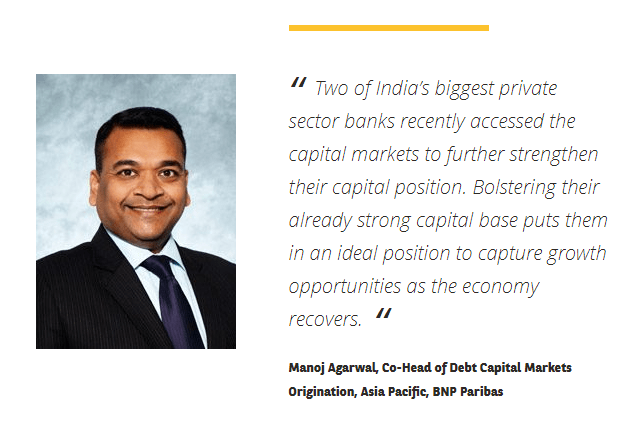Diving into India’s recent credit growth in the international markets as the country responds to the early signs of economic recovery.
In India, successive waves of Covid-19 have slammed the brakes on credit growth and prompted the government and central bank to step in to ease the burden on borrowers. A surge in cases of the Delta variant in May ushered in a second set of relief measures, allowing lenders to reschedule debt payments or grant a moratorium for up to two years.
Now, as the Indian economy starts to show signs of recovery, demand for credit from both corporate and consumer borrowers is beginning to return. Total lending by India’s commercial banks grew 6.0% year on year in the quarter ending 30 June, according to data released by the Reserve Bank of India; up from 5.6% in the three months to 31 March, the slowest rate since the second quarter of 2017.
Banks are also preparing to lift their repayment moratoria, which will elevate bad debt ratios that have been frozen since May.
“Two of India’s biggest private sector banks recently accessed the capital markets to further strengthen their capital position,” said Manoj Agarwal, Co-Head of Debt Capital Markets Origination, Asia Pacific, BNP Paribas. “Bolstering their already strong capital base puts them in an ideal position to capture growth opportunities as the economy recovers.”
HDFC Bank and Axis Bank both issued Additional Tier 1 (AT1) notes, raising a combined US$1.6bn of regulatory capital in the first international offerings from India since 2016.

The two deals were heavily oversubscribed. HDFC Bank raised US$1bn in late August at a yield of 3.7%. The offering was more than three times covered. This was the first time BNP Paribas acted as Joint Lead Manager and Joint Bookrunner on a transaction for HDFC Bank.
Days later, Axis Bank’s US$600m sustainability AT1 on 1 September priced at a yield of 4.1%, also three times covered. The Axis Bank deal was India’s first ESG-themed AT1 offering and the bank’s debut AT1 deal in the offshore US dollar market.
Axis’s board-level ESG committee and sustainable financing framework have been assessed as ‘credible and impactful’ by Sustainalytics, an independent agency, and the proceeds from the bond will be allocated to support eligible green and social projects. BNP Paribas acted as Joint Global Coordinator and Joint Bookrunner on the transaction.
“The response to these landmark deals highlights the depth of international demand for exposure to the Indian economy,” said Agarwal.
A global story
International investors have a positive view of India’s private sector banks, which are gaining market share. Credit growth in the private sector reached 10.1% in June, much higher than the 3.1% recorded for public sector banks, according to RBI data.
“International institutions were attracted to the banks’ strong recapitalisation stories, as well as Axis Bank’s ESG narrative,” said Agarwal. “This means many of our clients are able to diversify their investor base – 18% of HDFC’s and 26% of Axis’s bonds went to EMEA-based investors.”
Read about BNP Paribas Financial Institutions Coverage

